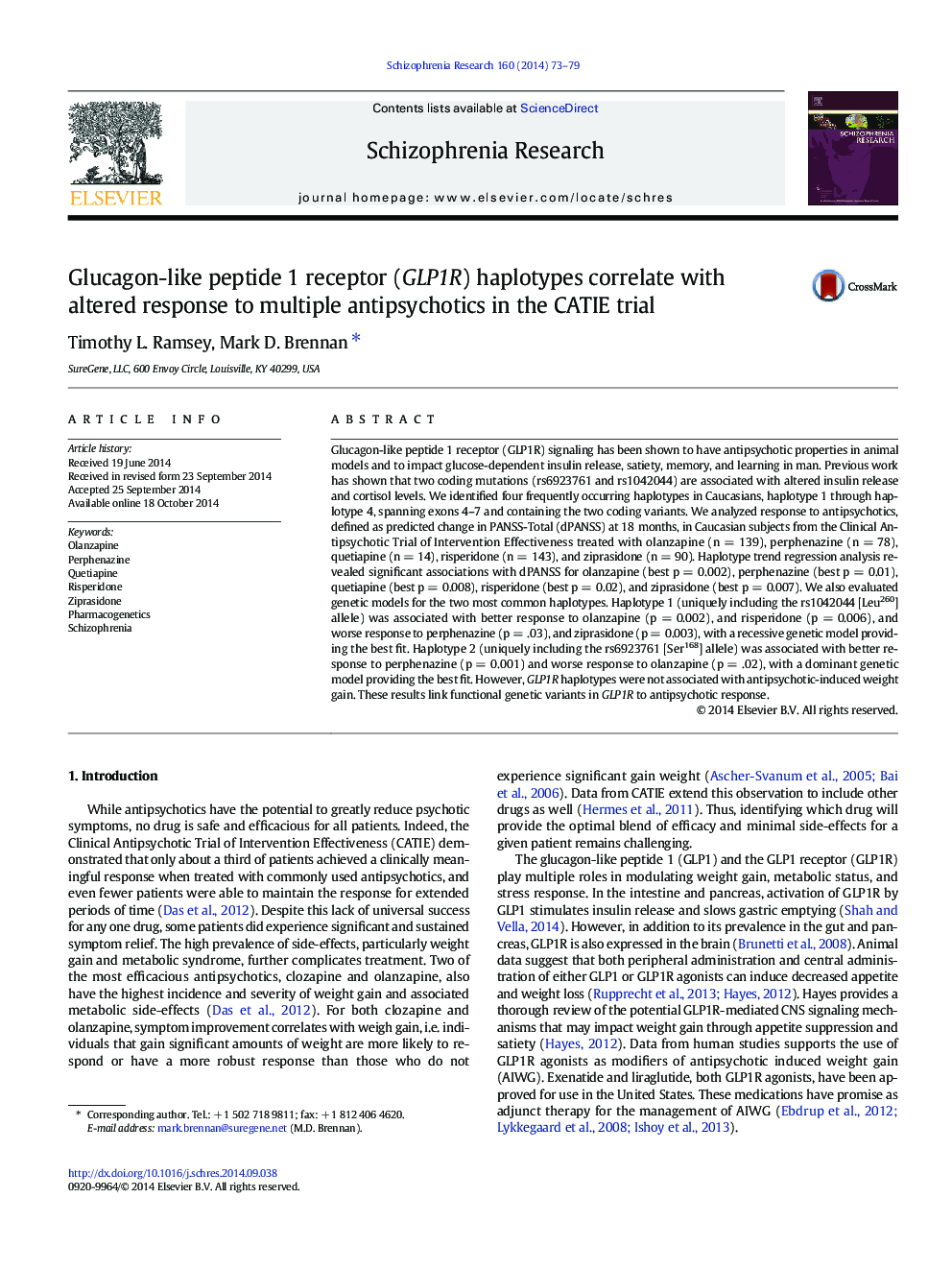| Article ID | Journal | Published Year | Pages | File Type |
|---|---|---|---|---|
| 6824508 | Schizophrenia Research | 2014 | 7 Pages |
Abstract
Glucagon-like peptide 1 receptor (GLP1R) signaling has been shown to have antipsychotic properties in animal models and to impact glucose-dependent insulin release, satiety, memory, and learning in man. Previous work has shown that two coding mutations (rs6923761 and rs1042044) are associated with altered insulin release and cortisol levels. We identified four frequently occurring haplotypes in Caucasians, haplotype 1 through haplotype 4, spanning exons 4-7 and containing the two coding variants. We analyzed response to antipsychotics, defined as predicted change in PANSS-Total (dPANSS) at 18 months, in Caucasian subjects from the Clinical Antipsychotic Trial of Intervention Effectiveness treated with olanzapine (n = 139), perphenazine (n = 78), quetiapine (n = 14), risperidone (n = 143), and ziprasidone (n = 90). Haplotype trend regression analysis revealed significant associations with dPANSS for olanzapine (best p = 0.002), perphenazine (best p = 0.01), quetiapine (best p = 0.008), risperidone (best p = 0.02), and ziprasidone (best p = 0.007). We also evaluated genetic models for the two most common haplotypes. Haplotype 1 (uniquely including the rs1042044 [Leu260] allele) was associated with better response to olanzapine (p = 0.002), and risperidone (p = 0.006), and worse response to perphenazine (p = .03), and ziprasidone (p = 0.003), with a recessive genetic model providing the best fit. Haplotype 2 (uniquely including the rs6923761 [Ser168] allele) was associated with better response to perphenazine (p = 0.001) and worse response to olanzapine (p = .02), with a dominant genetic model providing the best fit. However, GLP1R haplotypes were not associated with antipsychotic-induced weight gain. These results link functional genetic variants in GLP1R to antipsychotic response.
Related Topics
Life Sciences
Neuroscience
Behavioral Neuroscience
Authors
Timothy L. Ramsey, Mark D. Brennan,
